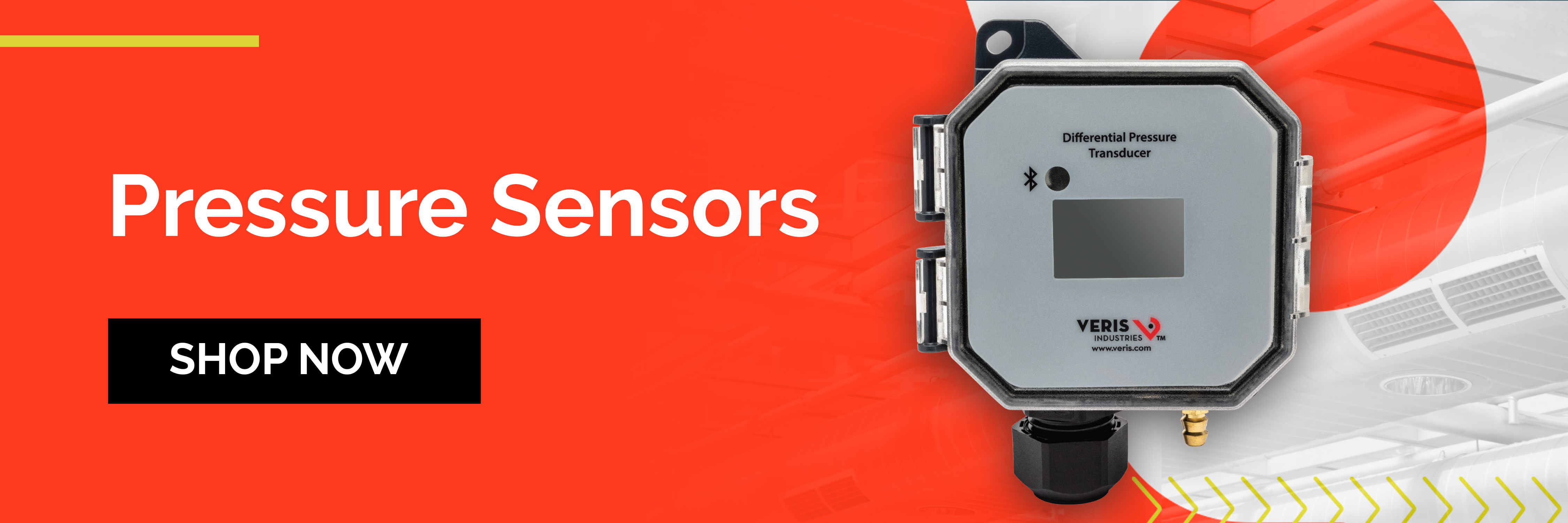Dry Pressure vs Wet Pressure: What is the difference?

When it comes to running an energy-efficient HVAC or energy management system, pressure sensors are the lifeblood of the operation. Because it's impossible to have individual workers monitoring each component at all times, sensors allow employees and project managers to know that everything's working correctly.
But how do the sensors work exactly? In these kinds of systems, there are two primary options: dry or wet pressure sensors. There are also three configurations you can have installed: dry to dry (D/D), wet to wet (W/W), or wet to dry (W/D). Complex energy management systems may use one, two, or all three configurations, but what are the differences between them? Let's break each one down to understand how it works.
What is a Dry Pressure Sensor?
Overall, a pressure sensor measures the difference in pressure between two nodes, aka the differential. In a dry-to-dry sensor, both sides only use air (or non-corrosive gas). Because the system only has air, it's designed for very low-pressure applications - typically three PSI or less. In this case, however, systems will measure the pressure in inches of water column, also represented as WC.
This setup uses electrical sensors attached to a single linear diaphragm that moves in one direction, depending on how the pressure is moving.
Examples of places where a D/D pressure sensor might be deployed include cleanrooms, isolation rooms, stairwell pressurization, and leak detectors. In some instances, a D/D sensor can be configured to detect high-pressure changes. Usually, these types of sensors are deployed for test and measurement applications, not ongoing detection.
Pressure Range for D/D Sensor: 0.10 "WC to 3 PSID (pressure differential)
What is a Wet Pressure Sensor?
As the name suggests, this type of sensor measures liquid pressure, not air. In this case, both sides use liquid that detects the amount of pressure on the sensor and triggers a voltage or current output accordingly. Many W/W pressure sensors use a single diaphragm (like a D/D model), but some units may use two different sensors in varying positions to detect the pressure differential.
Wet-to-wet pressure sensors are often deployed in HVAC systems to monitor elements like the filter status, chiller efficiency, pump operation, and strainer baskets. These sensors are also used in pressurized tank operations. Because these sensors can absorb more pressure, they can be deployed in relatively high-pressure systems.
Pressure Range for W/W Sensor: 1 PSI to 250 PSID
What is a Wet to Dry Pressure Sensor?
First, keep in mind that this setup doesn't just have to work one way. It can be either a wet-to-dry or dry-to-wet system, depending on the direction of the pressure. In this case, one side uses a metal diaphragm to push against the liquid. The other side of the sensor is exposed to the medium, which is either air or a non-corrosive gas.
The pressure differential is measured by the amount of air pressing against the diaphragm. It's imperative that in this setup, one side uses air only. Since that side has an exposed electrode, liquid could cause the whole system to short-circuit.
W/D sensors are often used to test benches, monitor filters, check air flow, or verify airspeed. This type of sensor is often used in industrial or aerospace applications where other types of sensors are too limited to work correctly. Since this sensor doesn't necessarily have an upper-pressure threshold, it's suitable for extremely high-pressure systems.
Pressure Range for W/D Sensor: 25+ PSI
As you can see, these sensors are sophisticated devices that can work for a wide range of applications. At Veris, we make sure to use only the best equipment for our clients, so browse our product selection today.





